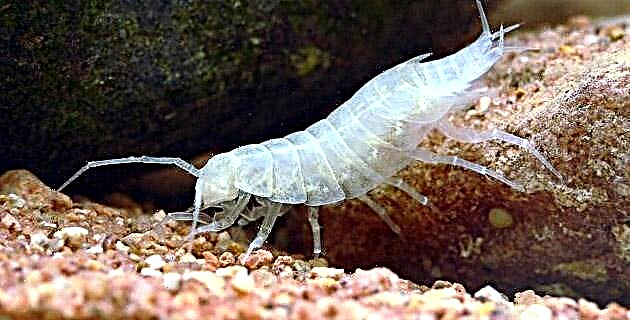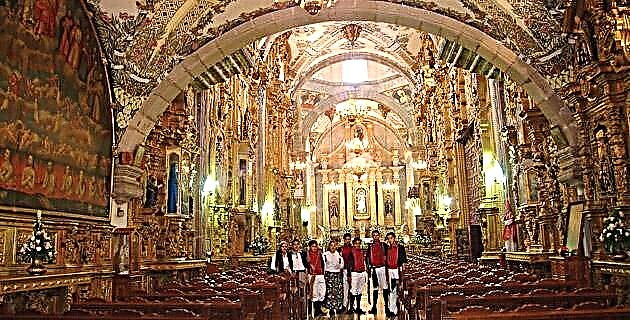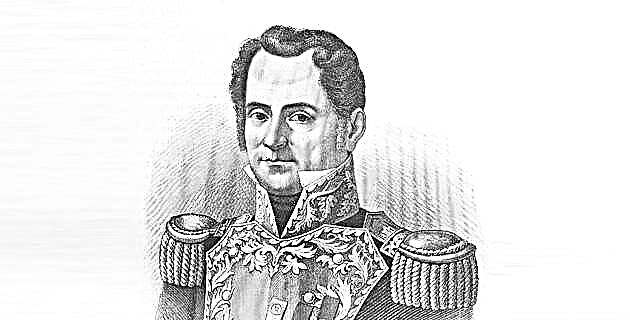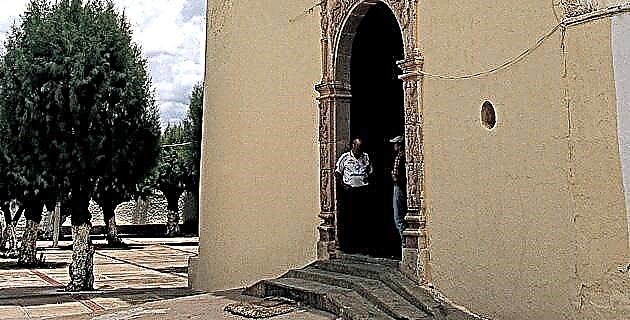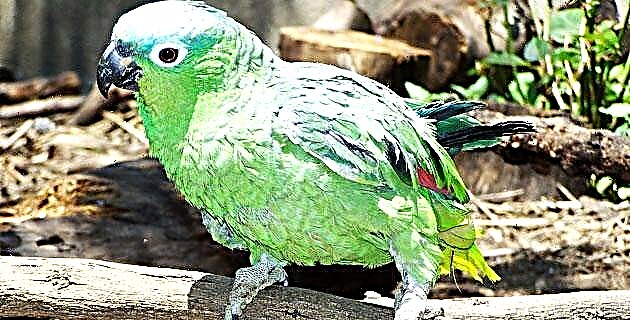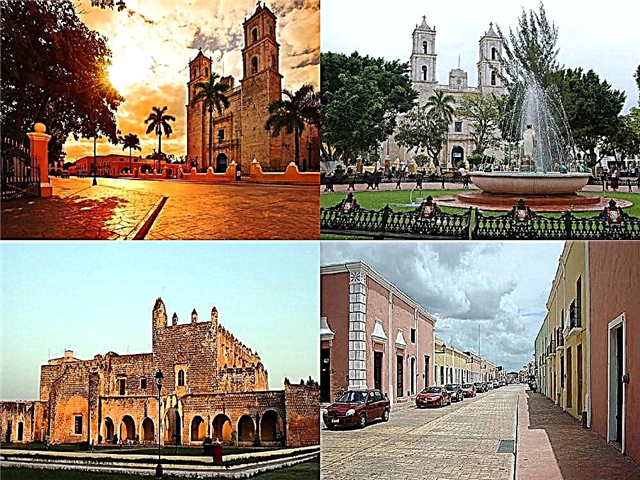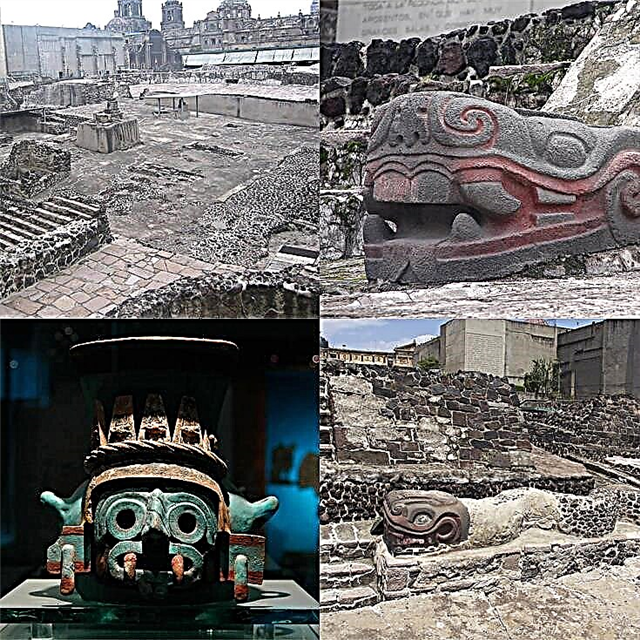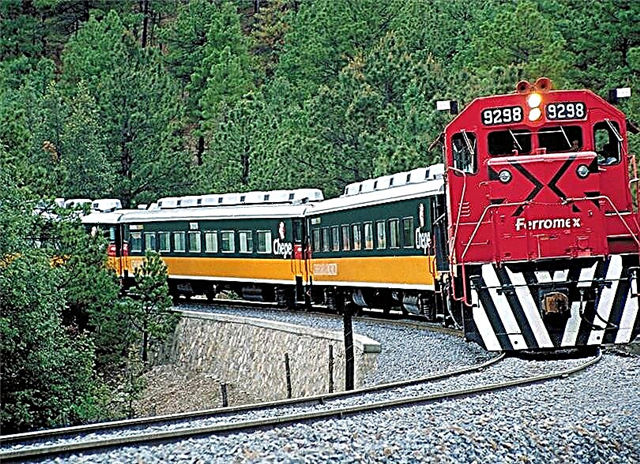The route on the El Chepe train that crosses the Copper Canyon between Chihuahua and Sinaloa, is due to its beautiful landscapes and fantastic towns and adventure parks, one of the best in Mexican territory.
Keep reading so you know everything you can see and do on the Chepe route.
What is El Chepe?
 It is the name of the Chihuahua-Pacific Railroad that links the city of Chihuahua (State of Chihuahua) with Los Mochis (Sinaloa), on the Mexican Pacific coast, in the northwest of the country.
It is the name of the Chihuahua-Pacific Railroad that links the city of Chihuahua (State of Chihuahua) with Los Mochis (Sinaloa), on the Mexican Pacific coast, in the northwest of the country.
The main attraction of Chepe is that it crosses the Copper Canyon, a majestic and rugged system of canyons in the Sierra Tarahumara, in the Sierra Madre Occidental.
These canyons are 4 times as extensive and almost twice as deep as the Grand Canyon of Colorado, in Arizona, United States.
The El Chepe tour is extremely exciting. There are 653 km of rustic spaces, of fearful cliffs, of 80 long and short tunnels and of circulating through 37 vertigo bridges over gorges of impetuous rivers. An adventure that makes this route a very attractive experience.
Ruta del Chepe: origin of a project and why its name
 El Chepe is a project with more than 150 years of history that began in 1861, when the construction of a railway line began to link Ojinaga, a Mexican city on the US border, with a port in the bay of Topolobampo, in Los Mochis.
El Chepe is a project with more than 150 years of history that began in 1861, when the construction of a railway line began to link Ojinaga, a Mexican city on the US border, with a port in the bay of Topolobampo, in Los Mochis.
The obstacles to crossing the deep and wide canyons of the Sierra Tarahumara in a journey that had to go up to 2,400 meters above sea level, delayed the initiative that finally materialized in the 1960s.
The president, Adolfo López Mateos, inaugurated the long-awaited Chihuahua-Pacific Railroad on November 24, 1961. 36 years later the concession was handed over to the company Ferrocarril Mexicano, S.A., which began operating in February 1998.
El Chepe is a monumental work of Mexican engineering that receives its name from the phonetics of the initials CHP (Chihuahua Pacífico).
How many passengers does El Chepe mobilize?
 The railroad is the main means of transportation for the Tarahumara Indians in the Copper Canyon. Annually, about 80 thousand low-income people travel in it, receiving a significant discount on the ticket price.
The railroad is the main means of transportation for the Tarahumara Indians in the Copper Canyon. Annually, about 80 thousand low-income people travel in it, receiving a significant discount on the ticket price.
For tourism purposes, El Chepe is approached annually by 90 thousand people, of these, about 36 thousand are foreigners, mainly Americans.
Map of the Chepe route

What is the Chepe railway route
 El Chepe operates with 2 passenger trains: Chepe Express and Chepe Regional. The first of these is more oriented to a tourist route between Creel and Los Mochis. The Chepe Regional makes the entire route between the city of Chihuahua and Los Mochis, Sinaloa.
El Chepe operates with 2 passenger trains: Chepe Express and Chepe Regional. The first of these is more oriented to a tourist route between Creel and Los Mochis. The Chepe Regional makes the entire route between the city of Chihuahua and Los Mochis, Sinaloa.
Freight trains that transport minerals, grains and other products also circulate through the railway system. These stop at 13 and 5 stations in the state of Chihuahua and Sinaloa, respectively. They make the journey between Ojinaga and the port of Topolobampo in Sinaloa.
What is Chepe Express like?
 The Chepe Express has a fantastic 350 km round trip between the Magical Town of Creel and the city of Los Mochis, in which it crosses the imposing landscapes of the Copper Canyon and the Sierra Tarahumara.
The Chepe Express has a fantastic 350 km round trip between the Magical Town of Creel and the city of Los Mochis, in which it crosses the imposing landscapes of the Copper Canyon and the Sierra Tarahumara.
Its comfortable carriages for business class and economy class passengers that include a restaurant car, bar and a terrace, can transport 360 people.
On the Chepe Express you can get off at the El Fuerte, Divisadero and Creel stations. If you want to stay in one of these to see the local attractions, you can arrange your return days later.
Executive class
Business class carriages have:
- 4 HD screens.
- 2 luxury bathrooms.
- Service on board.
- Panoramic windows.
- Premium audio system.
- Bar with panoramic view.
- Drinks and snacks service.
- Ergonomic reclining seats with a central table (48 passengers per car).
Tourist class
The coach class wagons have:
- 4 HD screens.
- 2 luxury bathrooms.
- Panoramic windows.
- Premium audio system.
- Reclining seats (60 passengers per car).
What else does Chepe Express offer?
 Chepe Express also offers alcoholic drinks, exquisite food and a terrace to take beautiful photos of the Copper Canyon and the mountains.
Chepe Express also offers alcoholic drinks, exquisite food and a terrace to take beautiful photos of the Copper Canyon and the mountains.
Urike Restaurant
In the two-level Urike restaurant with windows and panoramic dome you can enjoy fresh and delicious mountain food, while admiring the canyons to the full.
First level
The first level of the restaurant has:
- 4 HD screens.
- Panoramic windows.
- Premium audio system.
- 6 tables with 4 seats each.
Second level
In the second level you will find:
- A gallery.
- Dome type windows.
- Premium audio system.
- 6 tables with 4 seats each.
Pub
The Chepe Express bar can accommodate 40 passengers and is the ideal place to have a few drinks with friends, on an unforgettable trip through the Sierra Tarahumara. It includes:
- Luxury bathroom.
- 5 HD screens.
- Panoramic windows.
- Drinks and snacks bar.
- Premium audio system.
- 4 periqueras for 16 people.
- 2 lounge rooms for 14 people.
Terrace
On the terrace of the Chepe Express you can breathe the fresh and pure mountain air, while photographing the beautiful natural spaces outside. The terrace has:
- Lounge area.
- 1 HD screen.
- Luxury bathroom.
- Casement windows.
- Premium audio system.
- 2 Bars for drinks and snacks.
What is Chepe Regional like?
 The Chepe Regional makes the complete journey between Chihuahua and Los Mochis, crossing the impressive Sierra Tarahumara, from one end to the other.
The Chepe Regional makes the complete journey between Chihuahua and Los Mochis, crossing the impressive Sierra Tarahumara, from one end to the other.
The 653 km trip allows you to know the canyons of the Copper Canyon and the entire extension of the mountain range between the states of Chihuahua and Sinaloa.
Chepe Regional operates with Economy and Economy classes with an à la carte restaurant. Economic tickets are only reserved at the stations at both ends of the route (Chihuahua and Los Mochis).
The social interest rate applies mainly to the indigenous Tarahumara or Rarámuris, ancestral inhabitants of that sector of the Sierra Madre Occidental.
How long is the Chepe route
 The Chepe Express route between Creel and Los Mochis takes 9 hours and 5 minutes. Same time for the Los Mochis-Creel route.
The Chepe Express route between Creel and Los Mochis takes 9 hours and 5 minutes. Same time for the Los Mochis-Creel route.
The Chepe Regional route takes 15 hours and 30 minutes between its two extremes (Chihuahua and Los Mochis).
Both routes allow you to descend in 3 stations at no added cost, after which you arrange the continuity of the trip.
The itineraries are the following:
Chepe Express
 Until January 10, 2019.
Until January 10, 2019.
Creel - Los Mochis:
Departure: 6:00 am.
Arrival: 15:05 pm.
Frequency: daily.
Los Mochis - Creel:
Departure: 3:50 pm.
Arrival: 00:55 m.
Frequency: daily.
From January 11, 2019.
Creel - Los Mochis:
Departure: 7:30 am.
Arrival: 4:35 pm.
Frequency: Tuesday, Friday and Sunday.
Los Mochis - Creel:
Departure: 7:30 am.
Arrival: 17:14 pm.
Frequency: Monday, Thursday and Saturday.
Chepe Regional
 Chihuahua - Los Mochis
Chihuahua - Los Mochis
Departure: 6:00 am.
Arrival: 21:30 pm.
Frequency: Monday, Thursday and Saturday.
Los Mochis - Chihuahua Mochis
Departure: 6:00 am.
Arrival: 21:30 pm.
Frequency: Tuesday, Friday and Sunday.
Prices of the Chepe route
 The prices of the Chepe route depend on the length of the journey and the supply to the customer of food and beverages, subject to the type of train, the class of the wagon and the itinerary.
The prices of the Chepe route depend on the length of the journey and the supply to the customer of food and beverages, subject to the type of train, the class of the wagon and the itinerary.
Chepe Express
Executive class
The lowest-priced trip from Divisadero to Creel costs 1,163 and 1,628 pesos for a one-way and round trip, respectively.
The route between the stations at the ends of the Chepe Express (Los Mochis and Creel) is the one with the highest price. The single and round trip costs 6,000 and 8,400 pesos, respectively. Includes breakfast or snack, lunch or dinner, with non-alcoholic beverages.
Tourist class
The shortest route (Divisadero - Creel) has a price of 728 pesos (single) and 1,013 pesos (round).
The longest (between the extremes) costs 3,743 pesos (single) and 5,243 pesos (round). Access to the restaurant and bar is subject to availability.
Chepe Regional
The shortest and cheapest routes cost 348 pesos in Economy Class and 602 pesos in Regional Tourist Class.
The single trip between the extremes (Chihuahua-Los Mochis or Los Mochis-Chihuahua) is the one with the highest price, with a ticket of 1,891 pesos in Economy Class and 3,276 pesos in Regional Tourist Class.
Through which towns and stations the Chepe train route passes
 The following are the most important stations on the Chepe train route through the towns and cities of Chihuahua and Sinaloa:
The following are the most important stations on the Chepe train route through the towns and cities of Chihuahua and Sinaloa:
1. Chihuahua: capital of the State of Chihuahua.
2. Cuauhtémoc City: Chihuahuan locality head of the Municipality of Cuauhtémoc.
3. San Juanito: population of the State of Chihuahua at 2,400 meters above sea level, in the municipality of Bocoyna. It is the highest point in the Sierra Madre Occidental.
4. Creel: also known as Estación Creel is a Mexican Magical Town in the municipality of Bocoyna, Chihuahua.
5. Divisadero: main viewpoint area of the Copper Canyon with facilities to practice adventure sports.
6. Témoris: Chihuahuan town of the Copper Canyon belonging to the Municipality of Guazapares.
7. Bahuichivo: Chepe station in Chihuahua close to the towns of Cerocahui and Urique.
8. El Fuerte: Magical Town from Sinaloa in the municipality of the same name.
9. Los Mochis: third city of Sinaloa and municipal seat of Ahome.
What are the most outstanding attractions in the main places where El Chepe stops
El Chepe has stop stations in cities, towns and places, which bring together wonderful natural attractions, interesting architecture, important museums and other attractions. The most outstanding from the tourist point of view are:
Chihuahua
 The capital of the State of Chihuahua is a modern industrialized city. It was the scene of historical events in the country such as the trial and execution of Hidalgo, Allende, Aldama and other distinguished insurgents.
The capital of the State of Chihuahua is a modern industrialized city. It was the scene of historical events in the country such as the trial and execution of Hidalgo, Allende, Aldama and other distinguished insurgents.
Chihuahua was the nerve center in northern Mexico of the political processes led by Francisco Madero, by the constitutionalists and Pancho Villa, during the Mexican Revolution.
Religious buildings
Two of the great attractions of the city are the cathedral and the adjacent Museum of Sacred Art. The main temple of Chihuahua is the most important Baroque building in northern Mexico.
The Museo de Arte Sacro is located in the cathedral basement and exhibits objects of worship and pieces of art, including the chair used by Pope John Paul II on his visit to Chihuahua in 1990.
Also read our guide on the 12 best religious tourist places in Mexico
Civil buildings
In civil architecture, the Government Palace and Quinta Gameros stand out. The first of these was a government office, prison, public desk, and grain trading house. Now it is the Hidalgo Museum and a gallery of weapons.
La Quinta Gameros is a beautiful farm and century-old building built shortly before the Mexican Revolution, by the rich Chihuahuan miner and engineer, Manuel Gameros, who along with his family had to flee after the revolutionary process broke out.
Museums
In Chihuahua there are several museums linked to the momentous episodes of its history.
The Museo Casa Juárez exhibits pieces and documents from the stay of President Benito Juárez in the city, from 1864 to 1866, which include autographed manuscripts and a replica of his carriage.
The house in which the Museum of the Revolution works was the residence of Pancho Villa and the headquarters of his troops. It exhibits belongings of the famous guerrilla that include weapons, photos and documents, as well as the car in which he was shot in 1923.
Cuauhtémoc
 This Chihuahuan city of 169,000 inhabitants is home to the largest Mennonite community in the world, with about 50,000 people.
This Chihuahuan city of 169,000 inhabitants is home to the largest Mennonite community in the world, with about 50,000 people.
The Mennonites arrived in the territory after the Mexican Revolution, bringing with them their deep-rooted religious traditions and farmer wisdom from Europe, making Cuauhtémoc an important producer of apples and delicious dairy products, including the famous Chihuahua cheese.
Among the places of interest in this city on the Chepe route are:
1. Mennonite colonies: in these colonies you will be able to know the way of life of the disciplined and industrious Mennonites, admire their crops and their animal husbandry, as well as taste their products.
2. Mennonite Museum: its 4 rooms display old farm tools, kitchen utensils and antique furniture.
Visiting this museum at km 10 of the Cuauhtémoc-Álvaro Obregón Corridor, you will know and appreciate the traditions and customs of this community.
3. San Juanito: town of approximately 14 thousand inhabitants at 2,400 m.a.s.l., where winter temperatures below zero are recorded below 20 ° C. It is the highest place in the Sierra Madre Occidental.
Although its tourist infrastructure is very simple, it has some attractions that are worth visiting, such as the Sitúriachi dam where there is an ecotourism complex.
Another place of interest in San Juanito is the Sehuerachi Ecotourism Park, which has routes for hiking and mountain biking, hanging bridges over a stream, beautiful green areas, a camping area and cabins.
4. Creel: Magical Chihuahuan Town, entrance to the Sierra Tarahumara that houses the largest Tarahumara community in Mexico.
In Creel you can buy the products of its good artisans who carve indigenous musical instruments and pieces of bark and pine needles in wood.
Near Creel there are spectacular places to practice adventure sports and water currents, with beautiful waterfalls and natural pools.
On a hill in the town there is an 8-meter figure of Christ the King, patron of the town, from where you have magnificent views of the surroundings.
The Magic Town receives its name from the politician and businessman, Enrique Creel, an important figure of the Porfiriato, whose statue in his honor is in the Plaza de Armas.
At Lake Arareko, a few minutes from Creel, you can go kayaking, rafting and picnicking.
5. Divisadero: it is one of the most important tourist stations of Chepe's trip for its viewpoints and hanging bridges, from where you can admire its 3 important canyons: El Cobre, Urique and Tararecua.
At the bottom of the abyss runs the Urique River where, in addition to beautiful landscapes, lives a Tarahumara community.
Guided walks by indigenous people that depart from Divisadero can last between 3 and 6 hours, but they are worth it for the beauty of the natural beauty.
In the Divisadero area the Barrancas del Cobre Adventure Park operates, with a 3 km long cable car, suspension bridges suspended 450 meters above the void, zip lines, mountain biking that includes a route to the Magic Town of Creel, rappelling, climbing and tours by ATV and on horseback.
The most exciting zip line is the zip rider, with an extension of 2,650 meters above the canyons. The most romantic ones enjoy the sunrise and sunset of the place.
6. Témoris: it is a town in Chihuahua at 1,421 meters above sea level. of more than 2,000 inhabitants, which owes its election in 1963 as the head of the Municipality of Guazapares, precisely to the movement that it achieved with the Chepe station.
In Témoris there are simple lodgings to go to know the mountainous places of the surroundings.
7. Bahuichivo: it is a station near the Chihuahuan towns of Cerocahui and Urique. The first of these overlooks the Barranca de Urique and has a beautiful mission built by the Jesuits in the 17th century. It lives mainly from logging.
From the Cerro del Gallego there are splendid views of the Urique Canyon, with the town of the same name in the background. Urique is the site of a well-known Tarahumara marathon in which the indigenous people demonstrate their formidable endurance in the race.
Another nearby attraction is the Cerocahui Waterfall, at the end of the canyon.
8. El Fuerte: from the limits of Chihuahua with Sinaloa, El Chepe continues descending until it reaches the Magical Town of El Fuerte, which is distinguished by its historical, ethnic and natural heritage.
It gets its name from a missing fort that the Spanish built in the seventeenth century to protect themselves from indigenous incursions.
The Mirador del Fuerte Museum works on the site, in which a replica of the old fortification and objects related to the Indian and mestizo history of the town are exhibited, including a hearse, which according to local legend, carries the ghost of the dead.
El Fuerte was a rich mining center with beautiful colonial houses that are now beautiful hotels.
In the town there are places of interest such as the Plaza de Armas, the Church of the Sacred Heart of Jesus, the Municipal Palace and the House of Culture.
Nearby are 7 indigenous ceremonial centers in which it is possible to admire ethnic cultural features, mixed with Christian traditions.
The El Fuerte River is the scene of ecotourism activities such as walks along the boardwalk, raft and kayak rides, and observation of flora and fauna.
9. Los Mochis: this Sinaloan city facing the Gulf of California is the final stop on the trip of more than 650 km from Chihuahua.
The Mochitenses have created an agricultural emporium with their large crops of potatoes, wheat, corn, beans, chickpeas, cotton and sugar cane. They also extract fresh fish and seafood from the Sea of Cortez, which they prepare in their famous seafood restaurants, such as Stanley's and El Farallón.
Among the main tourist attractions of Los Mochis are:
Topolobampo Bay
 In Topolobampo Bay, the third largest in the world, is the second highest port in the state, after Mazatlán.
In Topolobampo Bay, the third largest in the world, is the second highest port in the state, after Mazatlán.
In addition to the ferry to La Paz, excursions depart from “Topo” to places of interest such as Isla de los Pájaros and Cueva de Murcielagos. On its beaches you can practice marine entertainment such as fishing, diving, snorkeling, watching dolphins and sea lions.
The Maviri
 It is an island and protected area in the bay of Topo whose charming beaches fill up at Easter and other season dates. Communication is through a picturesque wooden bridge and another made of concrete for vehicles.
It is an island and protected area in the bay of Topo whose charming beaches fill up at Easter and other season dates. Communication is through a picturesque wooden bridge and another made of concrete for vehicles.
On the beaches of El Maviri you can practice sailing, kayaking, fishing, diving, skimboarding, sandboarding and other extreme sports. On one side of the island there are some dunes frequented by fans of off-road vehicles.
Other attractions
Among the architectural attractions of Los Mochis are the temple of the Sacred Heart of Jesus, the statue of the Virgin of the Valley of the Fort, the Centennial House and the Plazuela 27 de Septiembre.
Other places of interest are the botanical garden with an interesting collection of regional cacti, the Cerro de la Memoria, the Valle del Fuerte Regional Museum and the Venustiano Carranza Park, where there is a monument to Don Quixote and his squire, Sancho Panza. .
What is the best time to travel in El Chepe
 It depends on your tastes. Although it is colder in winter, the snow in the mountains is a special attraction.
It depends on your tastes. Although it is colder in winter, the snow in the mountains is a special attraction.
In Creel and Divisadero, main destinations of interest of the Chepe Express, it is cool, even in summer. The average temperature drops to the range of 5-6 ° C between December and February, rising to between 16 and 17 ° C between June and September.
Always wear a jacket, apart from boots and walking shoes, on uneven terrain.
In summer you can spend most of the time with light clothing and a sweater or a windbreaker jacket. In winter you have to go warm.
How to take a tour of the Chepe route
 You can get to know the attractions on the Chepe route by reserving and buying tickets and other services yourself, or by doing it through a tour operator. The Chepe information telephone number is 01 800 1224 373.
You can get to know the attractions on the Chepe route by reserving and buying tickets and other services yourself, or by doing it through a tour operator. The Chepe information telephone number is 01 800 1224 373.
The Chepe tourist train recommends making the reservation in high season 4 months in advance. The periods of greatest influx of passengers are Easter, July-August and December. This recommendation is valid for both Chepe Express and Chepe Regional.
We also advise you to book your accommodation in advance as the accommodation capacity is limited. The main means of payment on the route is cash.
How much does a tour of the Chepe route cost
 Prices vary widely depending on the train (Chepe Express or Chepe Regional), the Executive or Tourist class, the route, the number of days of the tour, the season and the services included.
Prices vary widely depending on the train (Chepe Express or Chepe Regional), the Executive or Tourist class, the route, the number of days of the tour, the season and the services included.
For example, the 4-day tour organized by the Chihuahua Train, in Chepe Regional, Regional Tourist class, with the Los Mochis-Posada Barrancas-Creel-Los Mochis route, in December 2018, will have a price of 21,526 pesos that includes transportation, lodging, food and guide.
What is the best tour of the Chepe route?
 The magnificent journey that El Chepe makes can be partially or totally known in tours of 3, 4, 5, 6, 7 or more days, depending on your budget and interests.
The magnificent journey that El Chepe makes can be partially or totally known in tours of 3, 4, 5, 6, 7 or more days, depending on your budget and interests.
A comfortable and complete tour that allows you to know the main attractions throughout the route, is the Chepe Express VIP of 5 days in Executive class on the Los Mochis-Chihuahua route, with intermediate stops at Divisadero, Posada Barrancas, Piedra Volada, Parque Aventura, Creel and Basaseachi National Park.
This tour organized by Tren Chihuahua has a price of 39,256 MXN, including transportation, lodging, food and guide.
Chepe train packages
 The operator, Viajes Barrancas del Cobre, offers 7 packages with different travel times and routes:
The operator, Viajes Barrancas del Cobre, offers 7 packages with different travel times and routes:
1. Classic Package 1 (6 days / 5 nights, starting Thursday): Los Mochis - El Fuerte -Cerocahui - Copper Canyon - El Fuerte - Los Mochis.
2. Classic Package 2 (7 days / 6 nights, starting Monday and Saturday): Los Mochis - El Fuerte - Cerocahui - Barrancas del Cobre - El Fuerte - Los Mochis.
3. Classic Package 3 (7 days / 6 nights, starting Monday, Thursday and Saturday): Los Mochis - El Fuerte - Cerocahui - Barrancas del Cobre - Chihuahua.
4. Classic Package 4 (5 days / 4 nights, starting Monday, Thursday and Saturday): Los Mochis - El Fuerte - Cerocahui - Barrancas del Cobre - Chihuahua.
5. Classic Package 5 (7 days / 6 nights, starting Wednesday and Saturday): Chihuahua - Cerocahui - Copper Canyon - El Fuerte - Los Mochis.
6. Classic Package 6 (5 days / 4 nights, starting Wednesday and Saturday): Chihuahua - Copper Canyon - Bahuichivo - El Fuerte - Los Mochis.
7. Land and Sea Package (9 days / 8 nights, starting Sunday, Wednesday and Friday): includes Los Cabos, Los Mochis, Bahuichivo, Cerocahui and Barrancas del Cobre.
Quote your trip online indicating package, departure date and accommodation needs.
El Chepe Tours
 The operator, ToursenBarrancasdelCobre.com, schedules tours from Mexico City and from the interior of Mexico to the Copper Canyon aboard the Chepe, which include transportation, lodging, food, excursions and guides.
The operator, ToursenBarrancasdelCobre.com, schedules tours from Mexico City and from the interior of Mexico to the Copper Canyon aboard the Chepe, which include transportation, lodging, food, excursions and guides.
They have tours of 3 to 4, 5, 6, 7 and 9 days long, with different routes and conditions, with prices that vary between 9,049 and 22,241 pesos. You can request information by calling 2469 6631 or quote online.
Take your family or invite your friends to do the exciting route of the Chepe route and you will return physically and spiritually re-empowered and grateful for your decision.
Share this article with on your social networks so that your friends also know the route of Chepe through Barrancas del Cobre.


